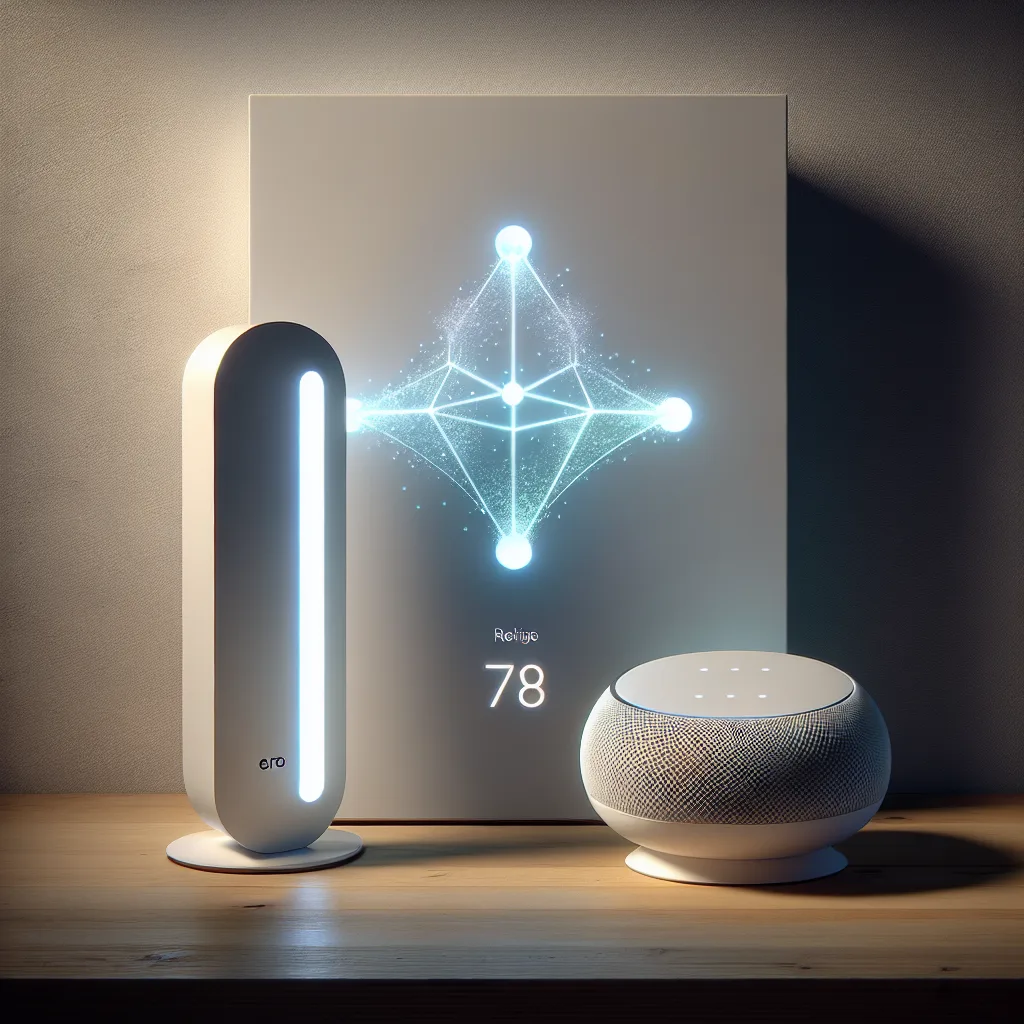You’ve got a powerful Eero router and a Google smart home. But can they work together as one happy family? Here’s what you need to know about your Eero and Google Home setup.
It happens to the best of us. You buy a new piece of tech for one reason—in this case, probably for its top-tier Wi-Fi—and months later, you discover it has a secret superpower. If you own an Eero Pro 6, Pro 6E, or Eero 7, you might have just realized it has a built-in smart home hub. This discovery probably led you to an important question, especially if you’re like me and invested in the Google ecosystem. Can you use this new-found hub to connect your Eero and Google Home setups?
I had this exact thought. My smart home runs on Google Assistant, and the idea of simplifying things with one less hub to plug in was exciting. So, I did a deep dive. Here’s the straightforward answer and what it means for your smart home.
So, Can Eero’s Hub Work With Google Home?
Let’s get right to it: No, you cannot directly use the Eero’s built-in Zigbee hub to control devices within the Google Home app.
I know, that’s probably not the answer you were hoping for. The reason is pretty simple. Eero is an Amazon company. Its built-in hub, which supports the Zigbee and Thread protocols, is designed to integrate seamlessly with Amazon’s Alexa. It acts as the brain for Alexa, allowing you to connect things like lightbulbs, plugs, and sensors directly to your router, which then lets Alexa control them.
Google Home has its own way of doing things. It relies on its own hardware to act as a hub or, more accurately, a “Thread border router” for the new smart home standard, Matter. Devices like the Nest Hub (2nd Gen), Nest Hub Max, and Nest Wifi Pro all fill this role.
Think of it like trying to use an Apple Watch with an Android phone. While they both tell time, they’re built to work within their own ecosystems.
Understanding the Role of Matter in Your Eero and Google Home Setup
“But wait,” you might be thinking, “isn’t Matter supposed to fix all of this?”
Yes, that’s the dream! Matter is a universal language for smart home devices. The goal is that any Matter-certified device (like a new light switch or motion sensor) should work with any Matter-certified controller (like an Eero router or a Google Nest Hub).
Here’s the catch in 2024: While the devices are becoming universal, the main controllers are still a bit like walled gardens.
* Your Eero router can act as a hub for Matter devices, but it reports back to the Alexa ecosystem.
* Your Google Nest Hub can act as a hub for Matter devices, but it reports back to the Google Home ecosystem.
You can’t use Eero’s hardware to be the primary hub for your Google Home app. You still need a Google-made device to be the central point of contact for your Matter-enabled gadgets if you want them inside the Google Home ecosystem. You can learn more about how different platforms work with Matter from the Connectivity Standards Alliance.
The Best Way to Set Up Your Smart Home
So, what should you do? You have this amazing router and a smart home you want to expand. The solution is actually pretty straightforward.
Let each device do what it does best.
- Use Your Eero for Wi-Fi: Continue using your Eero Pro for what it’s fantastic at—providing fast, stable, and secure internet to your entire home. Don’t worry about its hub features if you’re not using Alexa.
- Use a Nest Hub for Google Home: To add those new Matter or Zigbee devices (like motion sensors), you’ll need a Google-compatible hub. The best and most direct way is to use a Google Nest device that acts as a Thread border router.
Here’s a simple list of Google devices that work as a hub for Matter:
* Google Nest Hub (2nd generation)
* Google Nest Hub Max
* Google Nest Wifi Pro
By adding one of these to your setup, you give Google Home the “ears” it needs to listen for and control new Matter devices. Your new motion sensor will connect to the Nest Hub, and from there, you can create all the routines and automations you want within the Google Home app you already know and love. You can check out Google’s official blog for more on their implementation.
The Bottom Line
While the dream of a single, all-powerful hub isn’t quite here, creating a seamless smart home is still entirely possible. The Eero and Google Home systems are both best-in-class, but they work in parallel, not as one integrated unit. Let your Eero handle the Wi-Fi, and let a Google Nest Hub handle your smart home connections.
This approach keeps things simple, reliable, and ensures your smart home is responsive—which, as you know, is the most important part of making it feel truly smart.
